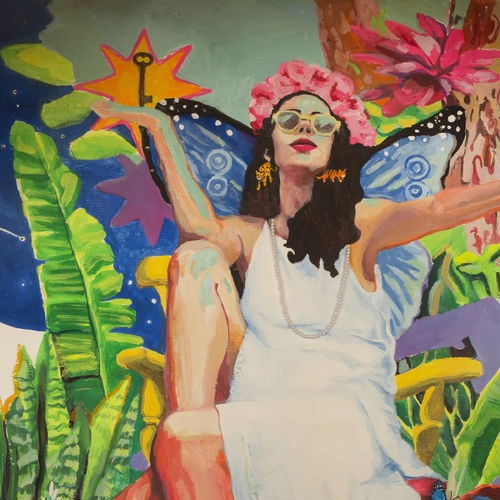After returning from Italy, where she’d gone to scratch an itch for singing opera, a young Marisa de Azevedo Monte made her debut in small clubs in the southern part of Rio in the late 1980s. She was surprised to find that she was able to seduce the crowds with the quality of her suave and elegant voice. Producer Nelson Motta advised her well and she took the time to build up a repertoire before signing with EMI for a first album. This was to become a landmark in the history of MPB (Música popular brasileira). Released in 1989, her collection of covers of international hits and covers of songs from Tim Maia, Titãs, Mutantes, Candeia, and Luiz Gonzaga, recorded ‘ao vivo’ (live), broke down the last remaining barriers between pop and Brazilian traditional song. The album MM sold 500,000 copies and ‘Bem que se quis’, a Portuguese version of a Pino Daniele hit, was its first big success.
The less eclectic, Mais, Monte’s second opus, was released in 1991 and displayed the singer’s closeness to various members of Titãs, the most popular rock band in Brazil at the time, of which Arnaldo Antunes was still a member. Produced by Arto Lindsay between Rio and New York, and much like the albums Verde, Anil, Amarelo, Cor-de-rosa e Carvão (1994) and Memórias, Crônicas e Declarações de Amor (2000), Mais unveils Monte’s talent as a composer and launched her international career. From then on hit followed hit (“Segue o Seco”, “Amor I Love You”), the covers got more demanding and the collaborations more prestigious: John Zorn, Philipp Glass, Marc Ribot, Laurie Anderson, Gilberto Gil, João Donato, Naná Vasconcelos, as well as the greatest of sambistas, Paulinho da Viola, with whom she would tour in 2017.
At the dawn of the third millennium, Marisa Monte set up her own record label, Phonomotor, and asserted her fondness for Carioca samba and her links with the Portela, the samba school of which her father was a member. She produced the album Tudo Azul de la Velha Guarda da Portela, and participated in the first recordings of the classic blue and white composers Jair do Cavaquinho and Argemiro Patrocínio. The documentary O Mistério do Samba traces the history of these veterans and the research carried out by the singer into their forgotten compositions from the 1940s and 1950s. This led to the album Universe ao meu Redor, the samba counterpart to the more pop-sounding Infinito Particular, released simultaneously in 2006. Both are an inspiration and we have a duty to remember them seeing as these sounds are also found on Portas (2021), her brand new album released on 1st July, her 54th birthday.
Since 2002, Marisa Monte’s name has been inextricable from that of Bahian percussionist Carlinhos Brown (whose second album, Omelete Man, she produced) and from the Paulista poet and singer Arnaldo Antunes: with the Tribalistas and their youthful hits they created the most famous trio in modern Brazilian music and sold 3,500,000 copies of their first album. Fifteen years later, the three friends are back with a second album. Much like their first it has been recorded at home and will be performed in front of more than 250,000 people around the world.




.jpg)
.jpg)

